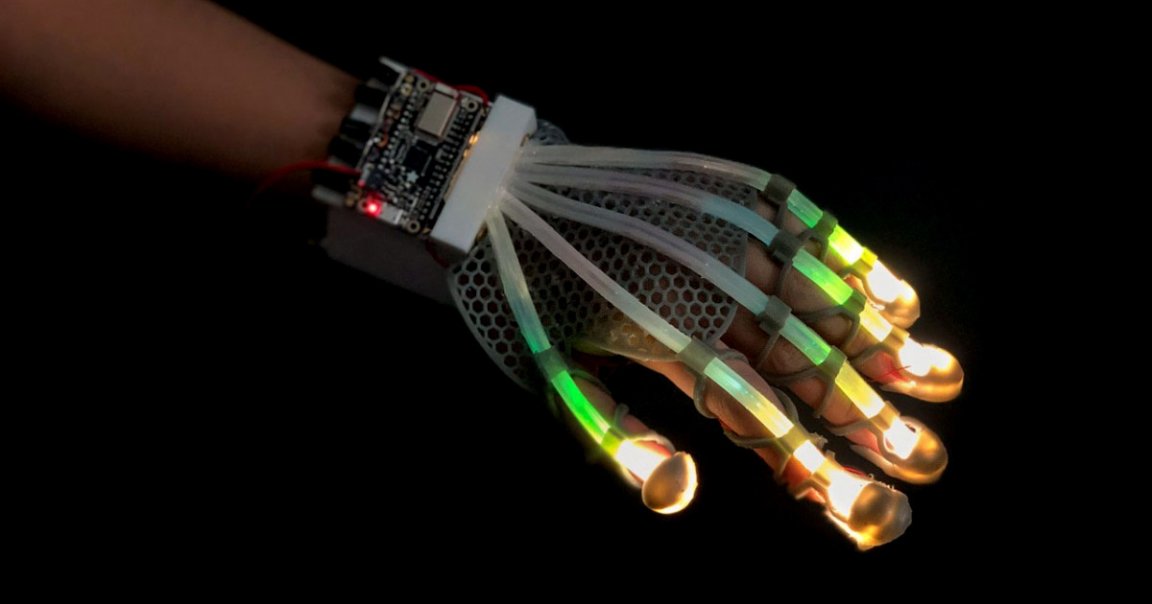
A team of scientists at Cornell University has created a stretchable fiber-optic sensor that detect exactly what you’re doing with your fingers — a capability they say could revolutionize the way we interact with simulated objects in virtual reality.
“VR and AR immersion is based on motion capture. Touch is barely there at all,” said Rob Shepard, an engineering professor at Cornell who worked on the glove, in a statement. “Let’s say you want to have an augmented reality simulation that teaches you how to fix your car or change a tire. If you had a glove or something that could measure pressure, as well as motion, that augmented reality visualization could say, ‘Turn and then stop, so you don’t overtighten your lug nuts.’ There’s nothing out there that does that right now, but this is an avenue to do it.”
The prototype glove, as detailed in a new paper published in the journal Science today, can detect deformations including pressure, bending and straining.
The new sensor is made out of fiberoptic sensors that can tell how each finger is shifting based on the optical path of light. An onboard computer sorts the deformations into detailed data about your hand activity.

The glove uses some basic and very inexpensive technology: Bluetooth for wireless data transmission, a lithium ion battery for power, and several LEDs.
“We know that soft matters can be deformed in a very complicated, combinational way, and there are a lot of deformations happening at the same time,” said co-author Hedan Bai in the statement. “We wanted a sensor that could decouple these.”
The researchers are now investigating if the technology could be used in physical therapy and sports medicine. But perhaps its greatest promise would be to let users in VR interact convincingly with a virtual world.
“This skin is a way to allow ourselves and machines to measure tactile interactions in a way that we now currently use the cameras in our phones,” Shepard said. “It’s using vision to measure touch. This is the most convenient and practical way to do it in a scalable way.”
READ MORE: Stretchable skin sensor could help you touch things in VR [Engadget]
More on VR: New VR Headset Reads Your Biometrics to Find Your Breaking Point